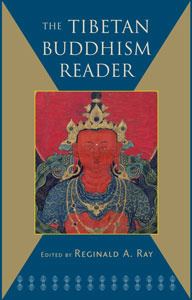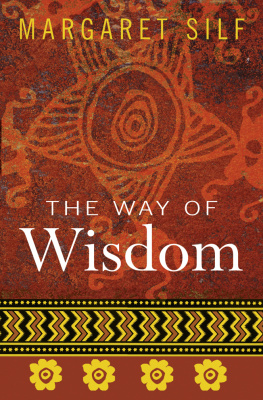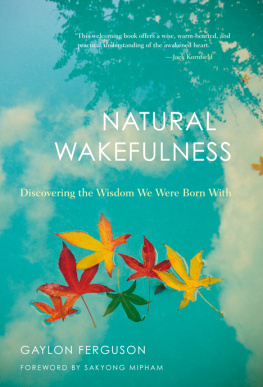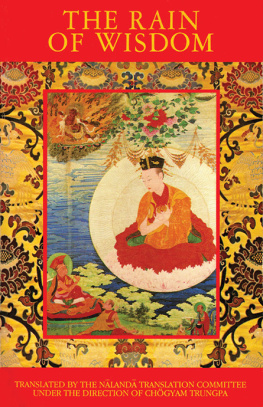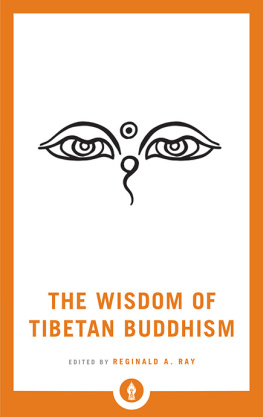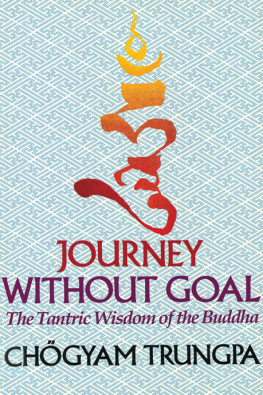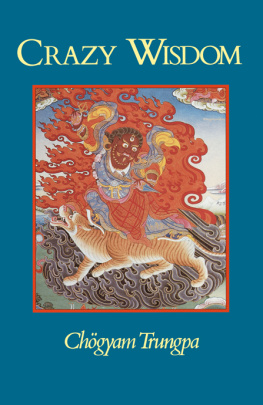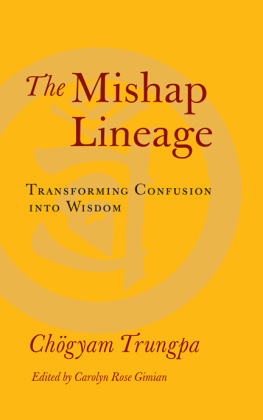ABOUT THE BOOK
Chgyam Trungpa describes crazy wisdom as an innocent state of mind that has the quality of early morningfresh, sparkling, and completely awake. This fascinating book examines the life of Padmasambhavathe revered Indian teacher who brought Buddhism to Tibetto illustrate the principle of crazy wisdom. From this profound point of view, spiritual practice does not provide comfortable answers to pain or confusion. On the contrary, painful emotions can be appreciated as a challenging opportunity for new discovery. In particular, the author discusses meditation as a practical way to uncover one's own innate wisdom.
CHGYAM TRUNGPA (19401987)meditation master, teacher, and artistfounded Naropa University in Boulder, Colorado, the first Buddhist-inspired university in North America; the Shambhala Training program; and an international association of meditation centers known as Shambhala International. He is the author of numerous books including Shambhala: The Sacred Path of the Warrior, Cutting Through Spiritual Materialism, and The Myth of Freedom.
Sign up to receive inspirational quotes by Chgyam Trungpa and special offers from Shambhala Publications.

Or visit us online to sign up at shambhala.com/eoceanofdharma.
Crazy Wisdom
Chgyam Trungpa
Edited by Sherab Chdzin

Shambhala Boston & London 2010
SHAMBHALA PUBLICATIONS, INC.
Horticultural Hall
300 Massachusetts Avenue
Boston, Massachusetts 02115
www.shambhala.com
1991 by Diana J. Mukpo
All rights reserved. No part of this book may be reproduced in any form or by any means, electronic or mechanical, including photocopying, recording, or by any information storage and retrieval system, without permission in writing from the publisher.
LIBRARY OF CONGRESS CATALOGING-IN-PUBLICATION DATA
Trungpa, Chgyam, 1939
Crazy wisdom / Chgyam Trungpa; edited by Sherab Chdzin
p. cm.(Dharma ocean series) Includes index.
eISBN 978-0-8348-2131-6
ISBN 978-0-87773-910-4
ISBN 978-1-57062-894-8
1. Padmasambhava, ca. 717ca. 762. 2. WisdomReligious aspectsBuddhism
I. Chdzin, Sherab. II. Title. III. Series
BQ7950.P327T75 1991
292.34448dc20 90-53378 CIP
Contents
Editors Foreword
T HE VENERABLE CHGYAM TRUNGPA RINPOCHE gave two seminars on crazy wisdom in December 1972. Each lasted about a week. The first took place in an otherwise unoccupied resort hotel in the Tetons near Jackson Hole, Wyoming. The other happened in an old town hall cum gymnasium in the Vermont village of Barnet, just down the road from the meditation center founded by Trungpa Rinpoche now called Karm Chling, then known as Tail of the Tiger.
Rinpoche had arrived on this continent about two and a half years previously, in the spring of 1970. He had found an America bubbling with social change, animated by factors like hippyism, LSD, and the spiritual supermarket. In response to his ceaseless outpouring of teachings in a very direct, lucid, and down-to-earth style, a body of committed students had gathered, and more were arriving all the time. In the fall of 1972, he made his first tactical pause, taking a three-month retreat in a secluded house in the Massachusetts woods.
This was a visionary three months. Rinpoche seemed to contemplate the direction his work in America would take and the means at hand for its fulfillment. Important new plans were formulated. The last night of the retreat, he did not sleep. He told the few students present to use whatever was on hand and prepare a formal banquet. He himself spent hours in preparation for the banquet and did not appear until two in the morningvery beautifully groomed and dressed and buzzing with extraordinary energy. Conversation went on into the night. At one point, Rinpoche talked for two hours without stopping, giving an extremely vivid and detailed account of a dream he had had the night before. He left the retreat with the dawn light and traveled all that day. That evening, still not having slept, he gave the first talk of the Crazy Wisdom seminar at Jackson Hole. It is possible that he went off that morning with a sense of beginning a new phase in his work. Certainly elements of such a new phase are described in the last talk of the seminar at Jackson Hole.
After the first Vajradhatu Seminary in 1973 (planned during the 1972 retreat), Trungpa Rinpoches teaching style would change. His presentation would become much more methodical, geared toward guiding his students through the successive stages of the path. The Crazy Wisdom seminars thus belonged to the end of the introductory period of Rinpoches teaching in North America, during which, by contrast, he showed a spectacular ability to convey all levels of the teachings at once. During this introductory phase, there was a powerful fruitional atmosphere, bursting with the possibilities of the sudden path. Such an atmosphere prevailed as he made the basic teachings and advanced teachings into a single flow of profound instruction, while at the same time fiercely lopping away the omnipresent tentacles of spiritual materialism.
It might be helpful to look at these two seminars for a moment in the context of the battle against spiritual materialism. Though they had been planned in response to a request for teaching on the eight aspects of Padmasambhava, Trungpa Rinpoche had slightly shifted the emphasis and given the headline to crazy wisdom. His experienced students, as well as the ones newly arriving, had a relentless appetite for definite spiritual techniques or principles they could latch onto and identify with. The exotic iconography of the eight aspects of Padmasambhava, if presented too definitely, would have been bloody meat in the water for spiritually materialistic sharks. This may partly explain why a tidy hagiography of the eight aspects, with complete and consistent detail, was avoided, and the raw, ungarnished insight of crazy wisdom was delivered instead.
Some editing of this material from the original spoken presentation has been necessary for the sake of basic readability. However, nothing has been changed in the order of presentation, and nothing has been left out in the body of the talks. A great effort has been made not to cosmeticize Trungpa Rinpoches language or alter his diction purely for the sake of achieving a conventionally presentable tone. Hopefully, the reader will enjoy those sentences of his that run between our mental raindrops and touch us where ordinary conceptual clarity could not. The reader will also hopefully appreciate that passages that remain dark on one reading may become luminously clear on another.
Here, we have the mighty roaring of a great lion of dharma. May it put to flight the heretics and bandits of hope and fear. For the benefit of all beings, may his wishes continue to be fulfilled.
CRAZY WISDOM SEMINAR I
Jackson Hole, 1972

Pema Gyalpo (Padmasambhava).
ONE
Padmasambhava and Spiritual Materialism
T HE SUBJECT that we are going to deal with is an extraordinarily difficult one. It is possible that some people might get extraordinarily confused. Or people might very well get something out of it. We will be discussing Guru Rinpoche, or as he is often called in the West, Padmasambhava; we will be considering his nature and the various lifestyles he developed in the process of working with students. This subject is very subtle, and some aspects of it are very difficult to put into words. I hope nobody will regard this humble attempt of mine as a definitive portrayal of Padmasambhava.
Next page

